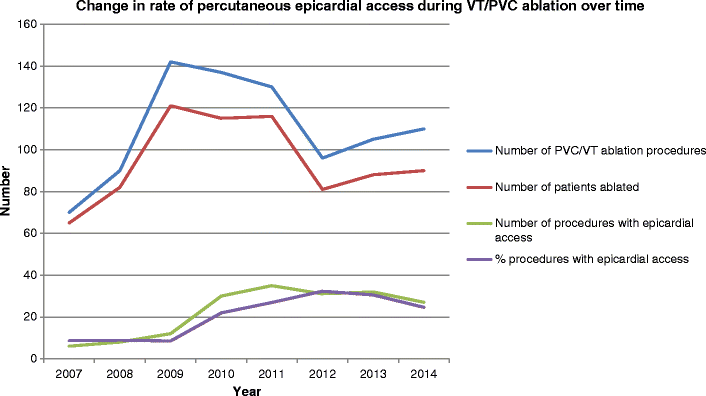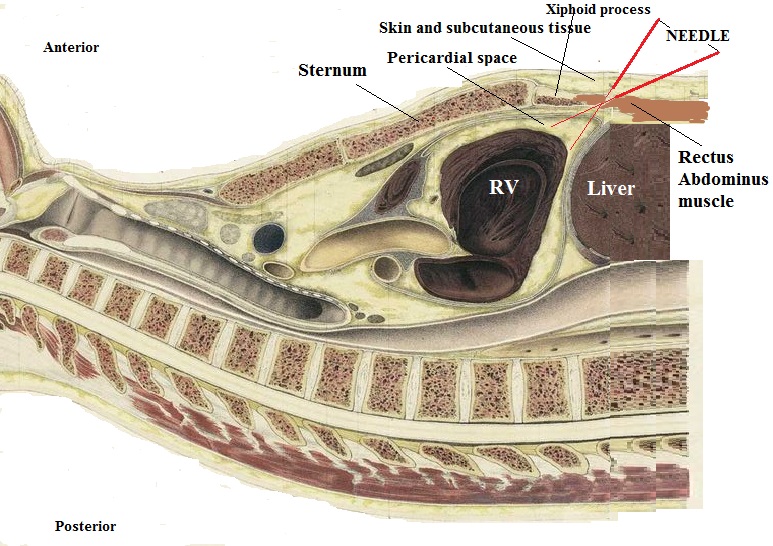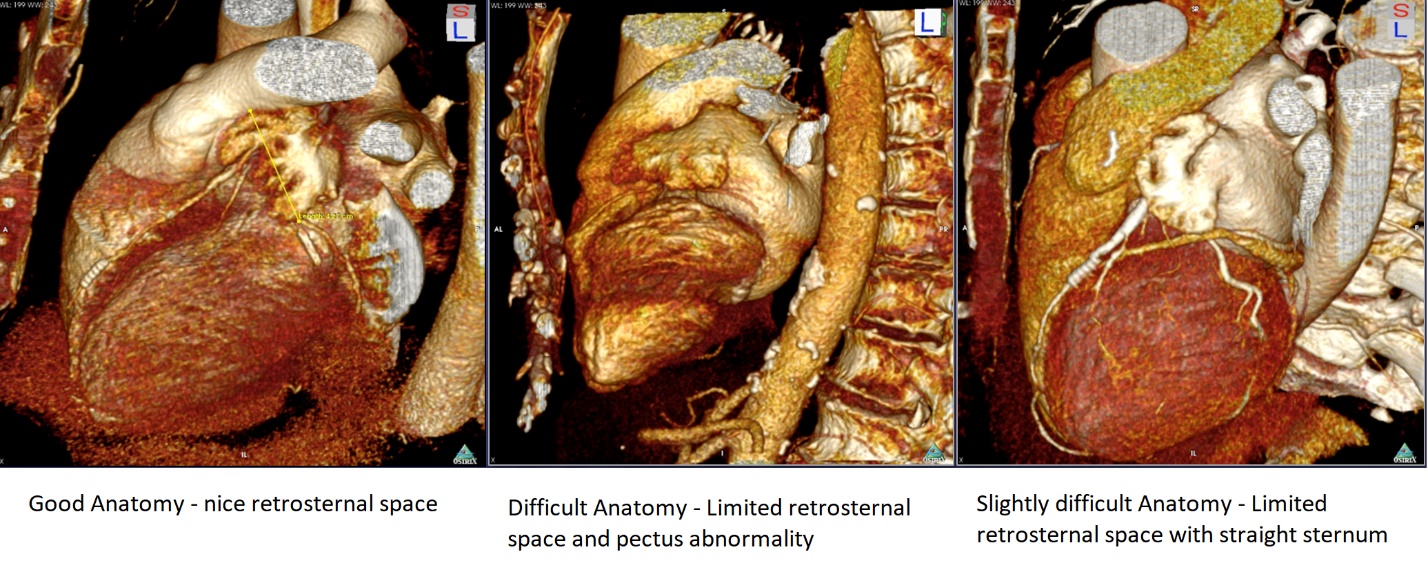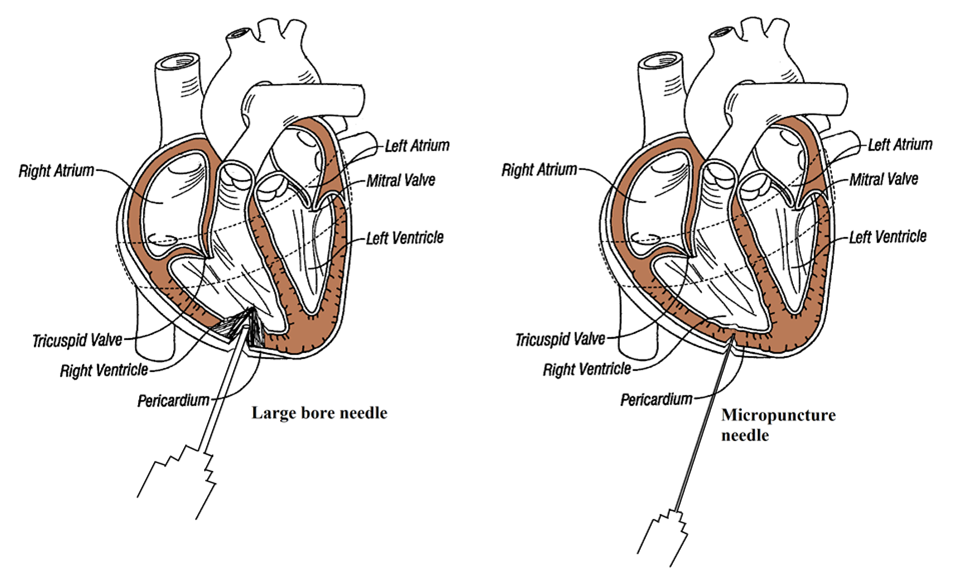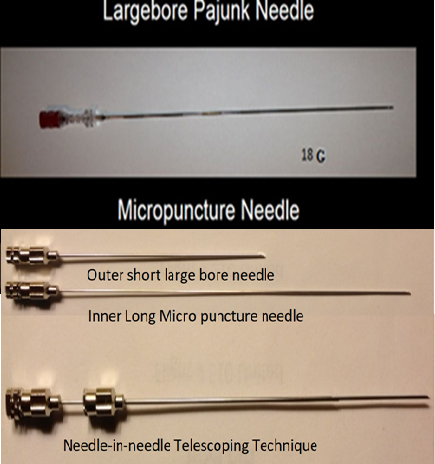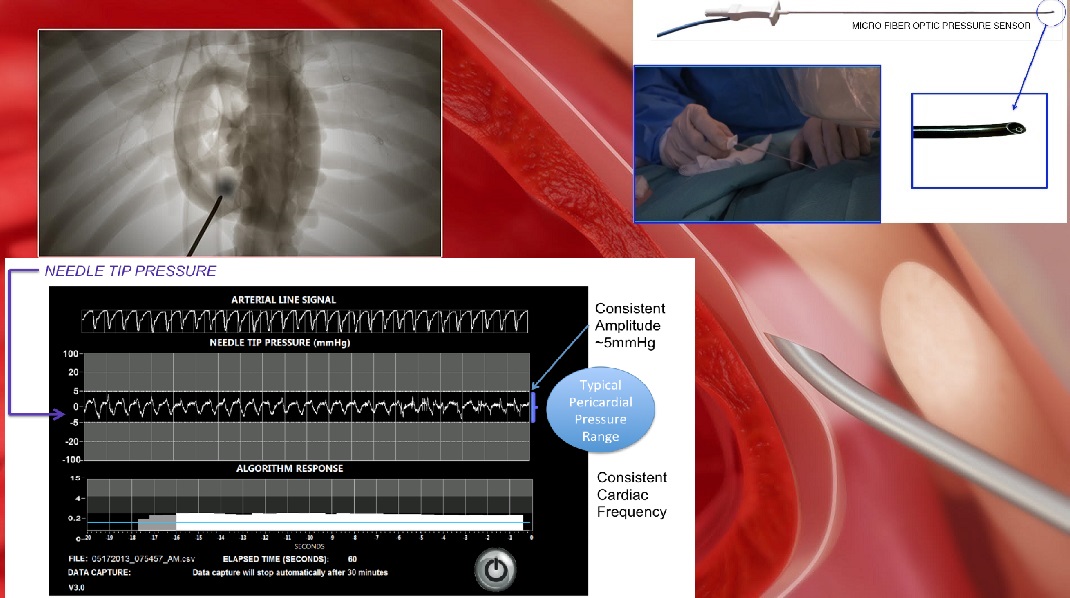Managing Pericardium in Electrophysiology Procedures
Introduction
Percutaneous access to pericardial space has revolutionized the mapping and ablation treatment of various atrial and ventricular arrhythmias. Cardiac electrophysiologists have widely embraced this technique in the past two decades since its introduction by Sosa and colleagues in 1996.1 In addition, several newer technologies targeting left atrial appendage (LAA) via pericardial access are being performed for stroke prevention in patients ineligible for oral anticoagulation.
Current Indications for Epicardial Access for Electrophysiology Procedures
The most common current indication for performing epicardial access is for epicardial ventricular tachycardia (VT) ablation, especially in patients who failed endocardial ablation. Patient populations that are more likely to need epicardial VT ablation include patients with non-ischemic cardiomyopathy (NICM) who have a predisposition for epicardial scarring such as arrhythmogenic right ventricular cardiomyopathy (ARVC), Chagas disease, hypertrophic cardiomyopathy (HCM), sarcoidosis, Brugada syndrome and occasionally epicardial premature ventricular contractions (PVC) and patients with ischemic cardiomyopathy with significant mid-myocardial scarring.2-4 Prior data has suggested that endo-epicardial approach provides greater freedom from arrhythmias in these patients.5
There has been an upward trend in the number of epicardial electrophysiology procedures performed in the last decade (Figure 1).6 This trend is mainly attributed to increasing procedural familiarity among operators and enhanced safety with evolving technology and improved periprocedural care. A study by Sacher et al.7 reported that 13% of VT ablations required epicardial access approach predominantly in patients with NICM with a reported 5% risk of acute periprocedural complications.
Figure 1
The other less common but important indications for epicardial access include epicardial supraventricular tachycardias, mostly in a patient who has already failed an endocardial ablation.8,9 These commonly include accessory pathways especially located in the left lateral region, right atrial appendage (RAA) to right ventricle (RV), left atrial appendage (LAA) to left ventricle (LV), those involving coronary sinus, atrial tachycardia (typically appendage related), atrial fibrillation (AF) for isolation of coronary sinus, ligament of Marshall, autonomic ganglia (transverse sinus) and mapping and ablation of inappropriate sinus tachycardia (IST).
LAA exclusion has emerged as an important therapeutic strategy in patients ineligible for oral anticoagulation. The LARIAT procedure is one such technology that requires pericardial access that has been increasingly used in patients.10,11 A study by Lakkireddy et al.,11 in a multicenter study including 712 patients who underwent LARIAT LAA procedure reported over 95% procedural success and <2% risk of complications related to pericardial access. Currently, there are several others in the pipeline due to improving efficacy, safety and simplicity in gaining pericardial access.12
Anatomy and Techniques of Accessing Pericardial Space
In order to access the pericardial space successfully, cardiac electrophysiologists need an ample knowledge about pericardial space anatomy and the surrounding structures. Pericardium, a double layered membrane (outer fibrous layer and dual inner serous sac), extends from the roots of the great vessels to the central tendon of the diaphragm. The inner serous sac has a visceral layer along the epicardial surface and a parietal layer reflected on the outer fibrous layer. The potential space between visceral and parietal layers is called pericardial space and normally contains <50 ml of serous fluid. The thickness of the outer layer of pericardium varies from 0.8-2.5mm. The reflections of the visceral pericardium posteriorly result in formation of sinuses such as the oblique sinus that is bounded by inferior vena cava (IVC), the four pulmonary veins, left atrium anteriorly and esophagus posteriorly and the transverse sinus that is bounded by ascending aorta and pulmonary trunk anteriorly and left atrium inferiorly. However anterior, apical and lateral surfaces of the ventricles are free of these reflections and therefore easily accessible via the pericardial space. The posterior and superior surfaces of the left atrium are also accessible via pericardial space.
Technique
Subxiphoid approach is the standard and most frequently used approach to access pericardial space. Prior to obtaining pericardial access all anticoagulants including antithrombotics must be discontinued. If heparin was given for endocardial ablation, protamine must be initiated prior to pericardial access. There are two common ways of gaining access into pericardial space using subxiphoid approach: 1) the conventional SOSA approach using a 17G blunt tipped epidural needle (Tuohy);1 and 2) the new Lakkireddy "micropuncture needle-in-needle" technique using a shorter large bore outer needle and a long micropuncture needle.13 The latter is a newer technique and uses 21G long micropunture needle to gain access to the pericardial space initially. The micropuncture (MP) needle can be used directly in thin patients where the support of the outer thicker needle is not necessary. Under sterile precautions, the skin is punctured between left border of the xiphoid process and the left rib cage with the needle directed towards the left shoulder (curved part towards the heart). Biplane fluoroscopy must be used for needle localization. As the needle pierces through the area between the diaphragm and the chest wall and touches the fibrous pericardium, cardiac pulsations may be appreciated. Injection of small amount of contrast can guide us with the location of the needle tip and once the fibrous pericardium is pierced, contrast injection can be used to outline the heart in the pericardial space. But always coordinate your needle movement with the downward diaphragmatic movement to avoid risk of perforation of the heart. For an anterior puncture the needle is projected at a shallow angle to target the anterior right ventricle and for a posterior puncture the needle is directed at a steeper angle to target the posterior/base of the heart, often marked by the coronary sinus catheter. One has to enter the subxiphoid region 1-2 inches below the tip of the xiphoid parallel to the sternum aiming towards the mid clavicular region. In obese patients one has to push the belly down or use a slight reverse Trendelenburg position to allow for the abdominal content to move away from the sub diaphragmatic region for safe access. Left lateral view would enable a very clear visualization of the trajectory of the needle in the anterior-posterior plane. Once inside the pericardial space, a guidewire is then advanced into the pericardial space followed by a sheath over the guidewire. A long exchange wire is the introduced into the space over which a higher French size sheath is then advanced. A mapping or ablation catheter can then be introduced through this sheath into the pericardial space (Figure 2A and B).
Figure 2A
Figure 2B
Pericardial Complications Associated with Pericardial Access
Pericardial access for EP procedures is associated with multiple potential complications involving the pericardium, but the most common are as follows:
- Injury to viscera – large bowel, liver, spleen, lung
- Injury to the blood vessels enroute – superior epigastric artery, coronary arteries, pericardial vein
- Right ventricular and left ventricular puncture/tear
- Acute post procedure and chronic pericarditis
- Pericardial effusion – hemorrhagic or inflammatory
- Pericardial tamponade
- Drain related chest pain
The most important predictors of pericardial complications are history of prior cardiac surgery/instrumentation and extent of mapping and ablation performed. In one of the recent systematic review/meta-analyses on epicardial procedural success (accepted at American Heart Association Scientific Sessions 2017), acute procedural success was reported in around 95% of cases with an incidence of around 2.8 %, 1.7%, 0.7% and 6.5% of pericardial effusion, pericardial tamponade, emergent heart surgery and RV puncture (not requiring intervention), respectively.14 Patients' gender, anatomy, body habitus, type of pericardial access tools, presence or absence of preexisting pericardial fluid and operator experience can have a significant impact on the success and safety of pericardial access. Adequate retrosternal space is critical to the success and safety of the pericardial access, especially anterior approach. Pectus deformity can limit the access as well (Figure 3).
Figure 3
Pericardial Tamponade and Effusions
Rapid accumulation of blood or serous fluid in the pericardial space might result in tamponade hemodynamics. In the setting of percutaneous interventions, tamponade is almost always secondary to perforations and due to rapid fluid accumulation as little as 100cc of fluid may result in hemodynamic decompensation. Rapid increase in intrapericardial pressure results in collapse of right atrium (RA) followed by collapse of the right ventricle (RV) during diastole, as evident on transthoracic echocardiography (TTE). The incidence varies with each center and operator experience and is usually around 4% after planned pericardial access for EP procedures.15
Tamponade is the most notable complication that could result from injury to the RV, LV, coronaries, pericardial vessels acutely, or from pericarditis subacutely or chronically. In one of the large single center studies, the incidence of perforation was around 0.4% after VT ablations with tamponade and hemopericardium developing in 0.2% and 0.1% respectively. The incidence of pericarditis in that study was also 0.1%.16 Della Bella et al. reported an incidence of pericardial tamponade of 3.6% among 222 cases undergoing epicardial VT ablation. The incidence of pericardial tamponade requiring surgery with the LARIAT procedure is variable. The earlier studies reported an incidence of about 10% while a more recent study by Lakkireddy et al.11 demonstrated a low incidence of around 1.5% of patients requiring surgery.
Pericardial effusion can be secondary to accumulation of serous fluid due to the ongoing inflammatory response or hemopericardium. Most present acutely but delayed cases of pericardial effusion have been noted. Post procedure pericarditis is the most common reason for serous fluid accumulation. However, hemopericardium can have varied etiologies depending on the presenting timeline of hemopericardium. Sacher et al.7 reported seven cases (4.5%) of hemopericardium out of 156 procedures. Early hemopericardium after an epicardial puncture can be secondary to an inadvertent RV puncture, disruption of pericardial adhesions or puncture/perforation of an epicardial vessel. The first two complications are generally self-limiting without major clinical sequelae but the later (epicardial vessel puncture or perforation) often requires surgical repair.17 Hemopericardium during the procedure can be secondary to either inadvertent RV puncture (unmasked after systemic anticoagulation) or an epicardial steam pop and once again these complications are self-limiting. Delayed hemopericardium, at the end of the procedure, could be related to gradual accumulation of blood with in the pericardial space form injured subcutaneous vessels within the tract (created by catheters and sheaths) but a rare theoretical possibility of "double RV perforation" should be kept in mind. Double RV perforation is when needle or guidewire enters and exits the RV free wall at two different sites while accessing epicardial space. The whole procedure can be uneventful but upon withdrawal of sheaths and catheters sudden bleeding into pericardial space may occur, creating a surgical emergency situation. As such, some centers/physicians pull sheaths over a wire and observe for 15-30 minutes before pulling the wire to manage such potential situations.
Similar to pericarditis, pericardial effusion may also have a delayed presentation. Delayed pericardial effusion is usually secondary to pericarditis from autoimmune damage (PCIS). Risk of hemopericardium increases if a patient is on systemic anticoagulation. The incidence of pericardial effusion after the LARIAT procedure is reported to be around 3.4-10% with delayed pericardial effusion reported in around 4-5% depending on the type of needle used for pericardial access and post procedural follow up.10,11
In patients who require post procedural anticoagulation, hemorrhagic conversion of the pericarditis should be kept in mind and aggressive control of inflammation and surveillance may be important to prevent subacute or chronic hemopericardium.
Pericarditis
The most common adverse event related to pericardial access procedures is acute post procedure pericarditis. Pericarditis is mostly a clinical diagnosis and presents with pleuritic chest (precordial) pain improving with sitting upright along with characteristic EKG changes (new widespread ST elevations in both precordial and limb leads with associated PR depression). At times the patients can have a benign EKG but still report classic symptoms of pericarditis. The incidence of post procedure (epicardial VT ablation) chest pain is reported to be around 20-40%.15,18 Around half of these patients tend to have concomitant EKG changes.18 The underlying pathogenic mechanism in most of these cases is believed to be inflammatory response triggered by initial damage to myopericardial tissue by trauma (due to needle while accessing), wire/catheter manipulation inside the space, ablation itself and tissue infarction as seen with LARIAT LAA exclusion. The incidence of pericarditis with LARIAT procedure is around 17%. Most of the cases of pericarditis are self-limiting and respond dramatically to NSAIDs. NSAIDs are given for 1-2 weeks and tapered off over the next week if patient shows improvement/resolution of symptoms.
Delayed pericarditis can occur weeks after the procedure. The underlying pathogenic mechanism in such cases is presumed to be autoimmune damage triggered by initial damage to pericardial tissue and are classified under a common class of post cardiac injury syndromes (PCIS). Rarely patients might develop chronic drug refractory pericarditis especially after repeated epicardial ablations.19,20 This is usually sequelae of the unresolved acute pericarditis with repeat procedures further complicating the situation. The data on chronic or recurrent pericarditis post procedures is mostly anecdotal. Aggressive periprocedural preventive measures like use of colchicine and NSAIDs seem to be largely preventing such cases.
Pericardial Drain-Related Chest Discomfort
Management of pericardial drain is an important aspect in the post procedural care of patients undergoing pericardial access for EP procedures. It has been a common practice in some centers to leave a pericardial drain in place post epicardial ablation or post LARIAT which permits management of an effusion should it develop. However, it is associated with persistent chest discomfort, drain related pericardial irritation (pericarditis) and potential infections. So the key is to identify those patients at risk of developing post procedural pericardial effusion. The duration of the drain, which is still being debated, has an impact on the incidence of drain related pericarditis with drains left in situ for >24 hours associated with higher incidence of chest pain and EKG changes.18 In one of the studies, around 5% of patients developed pericardial effusion after drain removal and a higher trend of re-accumulation was noticed in younger age patients with preserved ejection fraction and with inferior approach.21 Leaving drain in situ is reasonable in certain high risk patients such as those patients on anticoagulation or with a history of bleeding diathesis.
Other Complications
A rare complication of "broken wire in pericardial space" has also been reported. It was successfully extracted using a snare technique.20 A 0.025-inch guidewire, due to its fragility and increased likelihood of fracture while trying to withdraw it, is particularly vulnerable to such a complication. In addition to the above collateral arterial damage, phrenic nerve injury, right ventricular pseudoaneurysm, intra-abdominal bleeding due to liver trauma, ventricular-abdominal fistula and hepatic subcapsular hematoma are rarely reported. Injury to the blood vessels in the trajectory of the pericardial needle – superior epigastric artery, coronary artery, epicardial veins, pericardial vessles, intercostal vessels – is uncommon but kept in mind.
Predictors of Complications
The rate of above mentioned complications is a function of various variables. Such variables can be:
- Access related variables – the "inferior approach" is associated with higher risk of needle puncture leading to hemopericardium. It is probably due to more perpendicular orientation of needle relative to myocardium with inferior approach compared to anterior approach.
Similarly, the type of needle used for pericardial access has an implication on complications. Use of micro puncture (MP) needle is associated with a significantly lower risk of periprocedural large pericardial effusions and subsequent surgical repairs compared to conventional large bore needle (Tuohy or Pajunk needle).22 - Operator experience – the more experienced the operator, the lower the risk of complications.
- Elective procedures are associated lower procedural risk compared with emergency procedures.
- Advanced age, left ventricular systolic dysfunction and renal disease are independent predictors of higher incidence of complications.
- Underlying pathology for VTs – ablations for idiopathic VT are associated with lower rate of major complication (hemopericardium, tamponade, etc.) compared to scar related VT with underlying structural heart disease.16 Also, shorter VT cycle length tend to have higher association with post procedural pericardial effusion which may be possible be due to the fact that rapid VT can lead to catheter/sheath associated injury.21
- Anticoagulation status also plays a fundamental role. All patients undergoing epicardial access should be off any oral antithrombotics or anticoagulants. In patients who receive heparin for endocardial ablation, protamine must be administered with meticulous monitoring of ACT prior to obtaining pericardial access.
- Peri and intra-procedural use of medications – as we describe below.
- Drain related variables.
Why is Micropuncture Access Safer Than the Large Bore Needle Access?
A large bore needle, especially a blunt one, has a larger surface area at the tip and exerts higher shearing forces to enter the tough fibrous pericardium. These forces are often difficult to control, resulting in a significant impact on the right ventricular free wall, which in turn leads to a bigger tear when there is an inadvertent entry into the RV. On the contrary, the micropuncture needle tip is smaller in surface area and exerts less shearing force as it enters the pericardium. This reduces the risk of entry into the RV, and even if it hits, the level of injury is much less severe. The tactile "give-in" feedback one has with large bore needle is often not present with the micropuncture (MP) needle. Inadvertent RV entry rates are similar in both large bore and MP experience. However, the MP needle has lower cardiac perforation risk for the above reasons. (Figure 4).
Figure 4Prevention and Treatment of Complications Associated with Pericardial Access Procedures
Pericardial access procedure related complications, although categorized as above, have an overlapping nature and tend to coexist in the same patient. Post procedural pericarditis is a common condition due to its dramatic presentation but responds well to pharmacotherapy. Rarely pericardiocentesis may be needed for large pericardial effusions or pericardial tamponade. However, preventing such complications is critical, as they can increase the mortality, length of stay and cost associated with the procedure.
Several preventative strategies have been developed for pericardial access procedures to decrease the rate of complications:
- Using micropuncture (MP) needles instead of large bore (LB) needles (Tuohy or Pajunk needle) to access the pericardial space. Gunda et al.,22 in a multicenter observational study, showed that MP needle is associated with significantly lower incidence of periprocedural pericardial effusions (five times reduction) compared to LB needles. Use of MP needles does add an extra step to the procedure, but benefits outweigh the risks (Figure 5A).
EpiAccess (EA) system ( EpiEP, Inc., New Haven, CT) is a novel technology that includes a fiber optic sensor needle tip with real time display of pressure waveform that helps in precise localization of the needle in the pericardial space and an indirect comparison with both LB and MP needles has proven it to be superior to both of them in terms of complications and cost-effectiveness.23 This system in the long term may provide significant cost savings by minimizing the risk of complications (Figure 5B).
Figure 5A
Figure 5B
- NSAIDs are routinely used post procedure to decrease pericardial inflammation and acute chest pain and are usually prescribed for 1-2 weeks, depending upon the patient's symptoms. Steroids remain a suitable option in patients who are unable to tolerate NSAIDs, such as those with GI bleeding, gastric ulcers and renal failure. However, prior data has shown that steroids themselves are associated with recurrence of pericarditis and a slow overlapping taper is recommended with another agent.24
- Intrapericardial steroids: Dyrda et al.18 showed that the use of intrapericardial steroids significantly reduced the incidence of pericarditis related chest pain compared to systemic steroids or no steroids at all post VT ablation. This was the first study on steroid use in humans during epicardial mapping and ablation. Before this, prophylactic instillation of 2 mg/kg of intrapericardial corticosteroids (triamcinolone) during VT ablations had shown very promising results in animal models.25 However, steroids should not be used post LARIAT procedure as they can impair the healing of the induced myocardial infarction by LARIAT device, causing thinning and potential rupture of the myocardium. The cumulative benefit of intrapericardial steroids is still debated.
- Colchicine: Gunda et al.,26 in a large multicenter observational study, showed that periprocedural administration of colchicine in patients undergoing LARIAT procedure was associated with lower incidence of severe pericarditis, post procedural delayed pericardial effusion and pericardial drain output and therefore shorter length of stay in the hospital. Colchicine group received 0.3-0.6 mg BID of this drug for 1 week prior to and 1 week after the procedure and the standard (control) group received NSAIDS and other pain medications. Periprocedural use of colchicine has become a standard of care post LARIAT, and some centers are routinely using it after epicardial VT ablation procedures. Currently we recommend starting colchicine 2 weeks prior and continuing it for 4-8 weeks post procedure. Post procedural use of colchicine may be helpful even after an emergent rescue pericardial drain placement in non-LARIAT and VT ablation cases as well.
Lakkireddy et al.11 also showed in their results from the large LARIAT registry that the use MP needle for pericardial access and the use of colchicine periprocedurally successfully mitigated the risk of cardiac perforation and post procedure pericarditis/pericardial effusion respectively. - Pericardial drain in situ: although there are not many studies with robust data on the use of drains for post procedural pericardial effusions, it has become a common practice among electrophysiogists. Important suggestions regarding drain management would be to use drains with more wide spaced openings (rather than sheaths with a single opening) to cover a broader area and also extend the drain to the contralateral surface to adequately drain the fluid. For instance, with an anterior access, drain should be extended all the way to the posterior or infero-posterior area for adequate and effective drainage. The duration of the drain has been a point of debate as the drain in itself can cause pericarditis with associated chest pain and EKG changes. Drain left in situ for >24 hours has been shown to be associated with higher incidence of chest pain and EKG changes. But at the same time if withdrawn too soon the inflammatory process might still be unresolved, resulting in re-accumulation of pericardial effusion. The general consensus is that the drain should be left in situ, if tolerated, for 12-24 hours or until the rate of drainage is <50 ml over a period of 4 hours, whichever is later. Aggressive pain control with anti-inflammatory therapy as described above can minimize the drain related pericarditis.
Table 1: Tips to Safe and Successful Epicardial Access
KU's Epicardial Access Plan |
|
Conclusion
With the advancement in technology, pericardial access is being increasingly used for multiple EP procedures. Although an effective strategy in the comprehensive management of various arrhythmias, it is associated with some potential complications including pericarditis, pericardial effusion and rarely pericardial tamponade. These complications, besides increasing mortality, also have a huge financial burden from increased length of hospital stay post procedure. The main focus should be on preventing such complications by using a MP needle and post procedural colchicine.
References
- Sosa E, Scanavacca M, d'Avila A, Pilleggi F. A new technique to perform epicardial mapping in the electrophysiology laboratory. J Cardiovasc Electrophysiol 1996;7:531-6.
- Bai R, Di Biase L, Shivkumar K, et al. Ablation of ventricular arrhythmias in arrhythmogenic right ventricular dysplasia/cardiomyopathy: arrhythmia-free survival after endo-epicardial substrate based mapping and ablation. Circ Arrhythm Electrophysiol 2011;4:478-85.
- Cano O, Hutchinson M, Lin D, et al. Electroanatomic substrate and ablation outcome for suspected epicardial ventricular tachycardia in left ventricular nonischemic cardiomyopathy. J Am Coll Cardiol 2009;54:799-808.
- Cukkipati SR, d'Avila A, Soejima K, et al. Long-term outcomes of combined epicardial and endocardial ablation of monomorphic ventricular tachycardia related to hypertrophic cardiomyopathy. Circ Arrhythm Electrophysiol 2011;4:185-94.
- Di Base L, Santangeli P, Burkhardt DJ, et al. Endo-epicardial homogenization of the scar versus limited substrate ablation for the treatment of electrical storms in patients with ischemic cardiomyopathy. J Am Coll Cardiol 2012;60:132-41.
- Killu AM, Sugrue AM, Mulpuru SK, et al. Trends in percutaneous pericardial access during catheter ablation of ventricular arrhythmias: a single-center experience. J Interv Card Electrophysiol 2016;47:109-15.
- Sacher F, Roberts-Thomson K, Maury P, et al. Epicardial ventricular tachycardia ablation a multicenter safety study. J Am Coll Cardiol 2010;55:2366-72.
- Valderrabano M, Cesario DA, Ji S, et al. Percutaneous epicardial mapping during ablation of difficult accessory pathways as an alternative to cardiac surgery. Heart Rhythm 2004;1:311-6.
- Morady F, Strickberger A, Man KC, et al. Reasons for prolonged or failed attempts at radiofrequency catheter ablation of accessory pathways. J Am Coll Cardiol 1996;27:683-9.
- Price MJ, Gibson DN, Yakubov SJ, et al. Early safety and efficacy of percutaneous left atrial appendage suture ligation: results from the U.S. transcatheter LAA ligation consortium. J Am Coll Cardiol 2014;64:565-72.
- Lakkireddy D, Afzal MR, Lee RJ, et al. Short and long-term outcomes of percutaneous left atrial appendage suture ligation: results from a US multicenter evaluation. Heart Rhythm 2016;13:1030-6.
- Syed FF, Noheria A, DiSimone CV, Asirvatham SJ. Left atrial appendage ligation and exclusion technology in the incubator. J Atr Fibrillation 2015;8:61-70.
- Kumar S, Bazaz R, Barbhaiya CR, et al. "Needle-in-needle" epicardial access: preliminary observations with a modified technique for facilitating epicardial interventional procedures. Heart Rhythm 2015;12:1691-7.
- Turagam MK, Vuddanda V, Balla S, et al. A systematic review and meta-analysis on success and complications of epicardial access. Presented at American Heart Association Scientific Sessions 2017. Anaheim, CA.
- Della Bella P, Brugada J, Zeppenfeld K, et al. Epicardial ablation for ventricular tachycardia: a European multicenter study. Circ Arrhythm Electrophysiol 2011;4:653-9.
- Peichl P, Wichterle D, Pavlu L, Cihak R, Aldhoon B, Kautzner J. Complications of a catheter ablation of ventricular tachycardia: a single-center experience. Circ Arrhythm Electrophysiol 2014;7:684-90.
- Hseih CH, Ross DL. Case of coronary performation with epicardial access for ablation of ventricular tachycardia. Heart Rhythm 2011;8:318-21.
- Dyrda K, Piers SR, van Huls van Taxis CF, Schalij MJ, Zeppenfeld K. Influence of steroid therapy on the incidence of pericarditis and atrial fibrillation after percutaneous epicardial mapping and ablation for ventricular tachycardia. Circ Arrhythm Electrophysiol 2014;7:671-6.
- Javaheri A, Glassberg HL, Acker MA, Callans DJ, Goldberg LR. Constrictive pericarditis presenting as a late complication of epicardial ventricular tachycardia ablation. Circ Heart Fail 2012;5:e22-3.
- Killu AM, Friedman PA, Mulpuru SK, Munger TM, Packer DL, Asirvatham SJ. Atypical complications encountered with epicardial electrophysiological procedures. Heart Rhythm 2013;10:1613-21.
- Killu AM, Wan SH, Munger TM, et al. Pericardial effusion following drain removal after percutaneous epicardial access for an electrophysiology procedure. Pacing Clin Electrophysiol 2015;38:383-90.
- Gunda S, Reddy M, Pillarisetti J, et al. Differences in complication rates between a large bore needle and a long micropuncture needle during epicardial access: time to change clinical practice? Clin Arrhythm Electrophysiol 2015;8:890-5.
- Turagam M, Burkhardt D, Reddy VY, et al. Complications and cost-analysis of novel pressure guided needle (EpiAccess), large bore and a long micropuncture needle to facilitate epicardial access. Heart Rhythm 2017;14:S418-513.
- Arton G, Koren-Morag N, Spodick DH, et al. Pretreatment with corticosteroids attenuates the efficacy of colchicine in preventing recurrent pericarditis: a multi-centre all-case analysis. Eur Heart J 2005;26:723-7.
- D'Avila A, Neuzil P, Thiagalingam A, et al. Experimental efficacy of pericardial instillation of anti-inflammatory agents during percutaneous epicardial catheter ablation to prevent postprocedure pericarditis. J Cardiovasc Electrophysiol 2007;18:1178-83.
- Gunda S, Reddy M, Nath J, et al. Impact of periprocedural colchicine on postprocedural management in patients undergoing a left atrial appendage ligation using LARIAT. J Cardiovasc Electrophysiol 2016;27:60-4.
Keywords: Adrenal Cortex Hormones, Aneurysm, False, Anticoagulants, Anti-Inflammatory Agents, Anti-Inflammatory Agents, Non-Steroidal, Aorta, Arrhythmias, Cardiac, Arrhythmogenic Right Ventricular Dysplasia, Atrial Appendage, Atrial Fibrillation, Brugada Syndrome, Cardiac Tamponade, Cardiomyopathy, Hypertrophic, Chagas Disease, Chest Pain, Cicatrix, Colchicine, Coloring Agents, Control Groups, Coronary Sinus, Coronary Vessels, Depression, Diaphragm, Diastole, Disease Susceptibility, Drainage, Echocardiography, Electrocardiography, Electrophysiology, Endocardium, Epicardial Mapping, Epigastric Arteries, Esophagus, Fistula, Fluoroscopy, Follow-Up Studies, Ganglia, Autonomic, Head-Down Tilt, Heart Atria, Heart Ventricles, Hematoma, Heparin, Infarction, Inflammation, Ligaments, Liver, Lung Injury, Myocardial Infarction, Myocardium, Needles, Obesity, Pericardial Effusion, Pericardiocentesis, Pericarditis, Pericardium, Phrenic Nerve, Polyvinyl Chloride, Protamines, Pulmonary Veins, Punctures, Registries, Renal Insufficiency, Sarcoidosis, Spleen, Standard of Care, Sternum, Stomach Ulcer, Stroke, Stroke Volume, Syndrome, Tachycardia, Sinus, Tachycardia, Ventricular, Thoracic Wall, Tomography, X-Ray Computed, Triamcinolone, Vena Cava, Inferior, Ventricular Premature Complexes, Viscera, Xiphoid Bone
< Back to Listings

